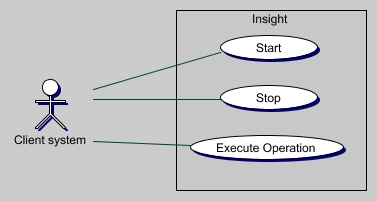 |  |



 |  |


 |  |




 |  |  |
 |  |  |
 |  |
|
 |  Main Main |  |
 |  Insight Insight |  |
 |  |  |
 |  |  |
 |  |
|
 |  Data storage Data storage |  |
 |  Operations Operations |  |
 |  Legend import Legend import |  |
 |  |  |
 |  |  |
 |  |
|
 |  Overview Overview |  |
 |  Publications Publications |  |
 |  Annotations Annotations |  |
 |  News News |  |
 |  |  |
 |  |  |
 |  |
|
 |  Configuring Configuring |  |
 |  |  |
 |  |  |


Insight is the Shaman subsystem which handles the CMS-oriented logic. It can be seen as a dedicated database, offering a special semantic, dedicated to our concepts.
What it isInsight can be run both as an in-process component, or a RMI server (depending of startup configuration).
It exposes a single interface for executing
Operation objects,
which can query or update the underlying model.
Insight stores content and its metadata, currently using local Filesystem and Prevayler, repectively.
Technical Use Cases

